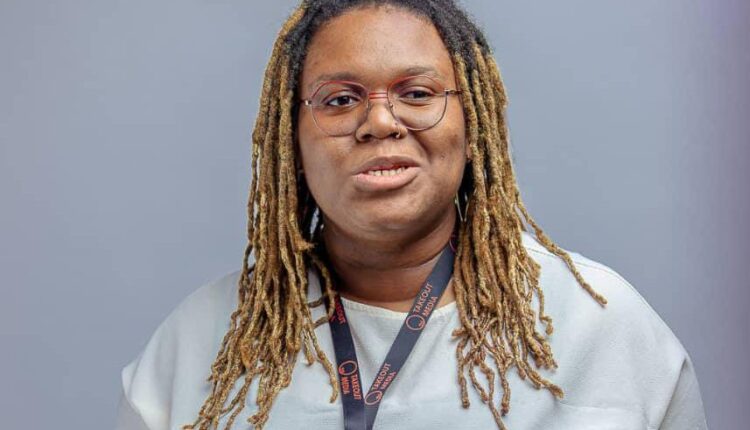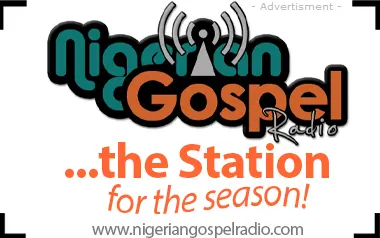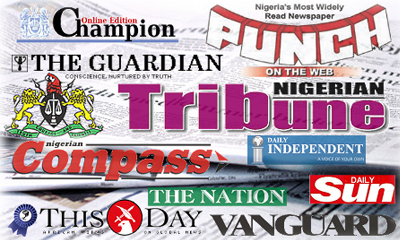Amarachi Nwauwa is a creative leader and design strategist with a deep passion for leveraging design as a tool for solving complex global challenges. In this interview our Correspondent CHIDI UGWU, she speaks on the company’s foray into Nollywood, how to adapt branding strategies for different streaming platforms among other topical issues.
Excerpts:
Design Teem has been a significant player in the branding and design industry for over a decade. Can you share some of the key milestones or achievements that have shaped the company’s journey?
Design Teem is a multidisciplinary design studio from Abuja, Nigeria. We started out as Takeout Media, a media and communications agency helping local and global companies shape the way they communicate with their audience. Over time as our company grew, we diversified under a parent company, TM Global and created SPVs that solve problems in more niche industry. DT is one of those vehicles, and over the years, we’ve worked with brands like Cosgrove, TAJBank, UNDP, Standards Organisation of Nigeria, PEBEC, TotalEnergies, WaterAid, Nasarawa Investment & Development Agency, Sozo Films, Natives Filmworks, and more. Some more recent highlights in our journey that have shaped our journey as a company, were having 3 of our movie projects with Natives Filmwork make number 1 on Amazon Prime— Love & Life, Kill Boro and A Father’s Love; leading the rebrand of the World Bank’s WASH project in Nigeria, called SURWASH; and Tokunbo, a new Nollywood movie, getting to Number 1 on Netflix.
What inspired Design Teem to venture into the Nollywood entertainment space?
We got into Nollywood because we saw a gap. Looking at the current trajectory of the industry, there’s a lot of growth that has happened in the last 10 years, there’s been an influx of capital and interest in the industry and the quality of work and stories that we tell have improved. We wanted to be a part of this changing narrative, and further influence the perception people have of Nigerian movies.
Given your recent foray into Nollywood movie branding, how has this new venture aligned with Design Teem’s core competencies and long-term vision?
I mean, we’re a “teem” of designers. This new venture has opened us up to new challenges in the film space, and one thing about us, we love challenges. In the long term we want to help brands and businesses tell stories visually, connect with their audience and influence people’s opinions. Working with film makers, is another way we’re doing this, solving their business problems, shaping the perception of their projects and ensuring that their audience gets the right message at first contact about their work.
How has your 9 years of experience as Takeout Media influenced your approach to movie branding?
Working as Takeout Media, we’ve really gotten to understand the power of storytelling, how consumers think and how to connect best with them. These strategies have translated well to our movie branding services, because at the heart of it, we’re helping film makers sell their movies to their audience, highlighting the value proposition each story offers and driving affinity for them in the hearts of the consumers.
Nollywood Movie Branding Process: What unique challenges and opportunities do you encounter when branding Nollywood movies compared to other industries?
This is an interesting question. Nollywood presents a unique branding challenge: each movie carries a distinct emotional core that we have to capture and convey. Our primary goal on each project is striking a delicate balance between revealing enough to intrigue the audience and maintaining an air of mystery. And this is where it differs from other industries. Unlike other industries, entertainment branding requires us to craft marketing materials that represent the filmmaker’s vision without giving away too much. This is both the challenge and opportunity that this industry offers us and it demands a nuanced approach where every visual element, picture we take and copy we write is carefully curated to evoke the right emotions, whether it’s excitement, fear, thrill, suspense, or camaraderie. Knowing precisely what to show and what to withhold is where our expertise comes in. That way we can create anticipation among the audience, and shape their pre-release and viewing experiences, because what we do goes beyond the pre-release activities.
How do you ensure that your branding aligns with both the filmmaker’s vision and the expectations of the Nollywood audience?
Well, we have a process that we follow. Once we come on board, we request the script, loglines, or a preview of the movie, depending on what phase of the project we come in at. Once we’re familiar with the story we identify references that align with the story being told and create a mood board for photography. Then, we create scamps, which are basically sketches of what the final poster will look like. Once the directions are approved, we plan our photoshoot session with the talent or identify key scenes from the movie we want to capture on set, then we kick off execution. That’s where we create the title treatment, poster designs, title sequence, animated posters and any other collaterals the project needs for maximum visibility. Because we also have an understanding of the market, we’re careful to design within that context, so we test our designs out on people within the ideal audience group so we are certain we’re not designing amiss.
What unique challenges have you faced in branding Nollywood movies, and how have you overcome them?
Design Teem offers a wide range of services. How do these various skills come into play when branding a movie?
Well, we like to think of it as branding but for movies. Imagine the movie was a person or a business. They have people they would typically talk to or who want to listen to what they have to say. Our job is making sure they have all the tools to be heard by those people and even more people who need to know what they have to say but may not find them at first. So, motion design, typography design, CGI, graphic design, all these skills come together when we’re branding a movie. They all play a role and help to reinforce and amplify the story to the right audience.With projects on both Amazon Prime and Netflix, how do you adapt your branding strategies for different streaming platforms?
We like to understand who we’re dealing with. So that’s always one of the first questions we ask film makers when we get in the room with them. Where is the movie going to be?
That will influence what we create. Will it be on Netflix, Prime, YouTube, will it go to cinemas? We have to take a different approach for each platform so we just make sure we are aligned with the film makers and distributors and understand the norms of each platform.
Can you walk us through the creative process for one of your movie branding projects, such as this new Netflix movie “Tokunbo”?
From concept generation to final execution, what steps are typically taken?
For Tokunbo it was quite the daring project! Mr. Chris and his team had a big vision so our guys had to match that energy. We follow the same process for every project but the nuances of each movie determine how we adapt that process. We had to go to Lagos and were on set while the movie was filming to make sure we had a lot of pictures to work with. We started out by reading the script, before the casting call was made. Then we created scamps for posters we wanted to create and a schedule for the photoshoot on set to make sure our plans are aligned with the shooting schedule. Once we had our pictures ready, and our scamps approved we began designing— the teasers, posters, banners, motion graphics and marketing collaterals were done alongside the title treatment. That’s the fancy text that holds the name of the movie. We had a lot of iterations of course, there are many designs we did that the public would never see. We must have done at least 30 different concepts, but that isn’t a typical for these kinds of projects. Once we had the approved concepts, we cascaded them to relevant sizes for the different platforms. So yeah. That’s our process.
As an expert in branding and design, what do you see as the biggest challenges facing the Nigerian creative industry today?
That’s a tough question because it’s never just one thing. However, one challenge I can speak to is the lack of alignment between creatives and clients. Sometimes, our process isn’t clearly understood – including what it takes to do good work and how long that can take. If this isn’t properly communicated, it can affect the vibe of the project on both sides. Good communication is what sustains projects, after all.We’re particularly focused on elevating the visual storytelling aspect of the industry. There’s immense opportunity to create more sophisticated, globally competitive marketing materials that truly capture the essence of our films.To address this, we’re implementing a streamlined structure and process that can help replicate excellent work consistently. Nigeria has a wealth of talent, but we believe good systems help multiply impact. It’s about creating an environment where creativity can thrive within a well-defined framework.
What has been the most rewarding aspect of working on Nollywood movie branding projects?
Honestly, it’s a couple of things but seeing our work help filmmakers realize their vision has been rewarding. Our teammates get to see their work make real impact on a global scale, that is always exciting. I mean seeing it on your screen is one thing. Seeing it on social platforms, billboards, award shows, etc. That’s very rewarding.
Advertisement
Can you share a specific example of a movie branding project that had a significant impact on the film’s success?
All of them! Well, our work on A Father’s Love and Tokunbo had significant impact on the project success. Beyond design, we actually handled the marketing of both projects and have been able to tie them to social phenomenon that get people talking about them. Not just talking, but actual views that have affected the balance sheet if you know what we mean.
How do you measure the effectiveness of a movie’s branding campaign? What metrics do you track?
Performance of the project on whatever distribution platform it is placed on. We like to say our client’s success is our success, and we really mean that. That’s what drives us to bring our A-game every time.
What trends or developments do you foresee in the future of Nollywood movie branding?
The scope is going to increase. Not just the poster designs, but set designs, collaterals, shop signages, etc. The things that are in the built world of that story will need a coherence that will affect the projects performance in the market. Think of the Lady Whistledown pamphlets that were distributed in Bridgerton for example. Those were brandednand designed. And as the industry grows, and funding becomes more available we believe a gap will be open in the market for this role. And Design Teem is prepared for that.
How do you envision Design Teem contributing to the growth and evolution of the Nollywood industry?
Our systems, processes and approach for one. Also, we genuinely love our clients and so we take the extra time to learn and understand what the best outcome for them is so that is the KPI we use to judge our performance. I hate to say this because it has such a bad rep in the market, but we’re like a family. We’re very professional, but we pursue the best interest of our clients first because their satisfaction and success is really what drives us.
Can you talk about the team’s culture and the values that drive your work?
Hmmm. Culture. That’s the soul of any business you know. We genuinely believe in delivering outstanding services and products that lead to client satisfaction and fulfilling careers for our people. So we filter each project based on this.
Is there a big challenge we can solve, will our people be excited to work on this, and will our clients be happy at the end of the project?
For that last one, we make sure we hit a yes on every project. But having these at the center of our thoughts has shaped a culture of drivers who go above and beyond on every project to make sure that our clients get the best work, that isn’t just aesthetic but solves their problems.
How do you foster creativity and innovation within your team?
We play to everyone’s strengths. Because we’re a team, we know what each person excels at and try to play to their strengths. Our team is always growing and expanding our skill sets, and so there’s always an opportunity to try something new on each project that breaks the bounds of what we’ve accomplished before. We make sure everyone has a voice and are comfortable using it. Everyone is heard, that way we can all contribute without censure because we know we have the same goal at the end of the day.
How do you establish trust and build strong relationships with your clients, especially in the fast-paced world of film production?
We make sure we’re bringing value to the table. Then, if we say we’re going to do something, we do it. We make sure we’re a reliable partner for our clients and partners, people they can trust to bring real solutions to their business challenges, and who can grow with them and grow to accommodate their growth.
What is your approach to collaborating with filmmakers, actors, and other stakeholders involved in a movie project?
Clear, open communication and collaboration. People want to be involved in whatever you’re doing. So, we make sure we’re transparent and accountable when working with these stakeholders. They know where we are per time and what to expect. That way we’re ahead of any frictions that may come. And if they do come, we can handle it.
With projects on both Amazon Prime and Netflix, how do you adapt your branding strategies for different streaming platforms?
Our approach is localized but also for a global audience. So while we make sure to create within the context of the local landscape, we stay abreast of global industry trends and shifts to ensure our work is of a high standard, not just in Nigeria, but globally.
With the growing popularity of Nollywood films internationally, are there plans for Design Teem to expand its operations beyond Nigeria?
Definitely. We have operations in the UK, US and other African countries, so we’re always open to new businesses. We like to say we are locally owned but global serving. The world is a global village, so we’re positioned to serve that village.
What challenges and opportunities do you see in entering new markets?
I’d say understanding the different cultures, because it’s always contextual. What works in Nigeria may not fly in Boston.
Looking ahead, what are Design Teem’s goals for further establishing itself in the Nollywood movie branding space?
We’re looking for more partners with stories we can help amplify. Our goal is to reinforce ourselves as the right partner for entertainment branding in the industry.











